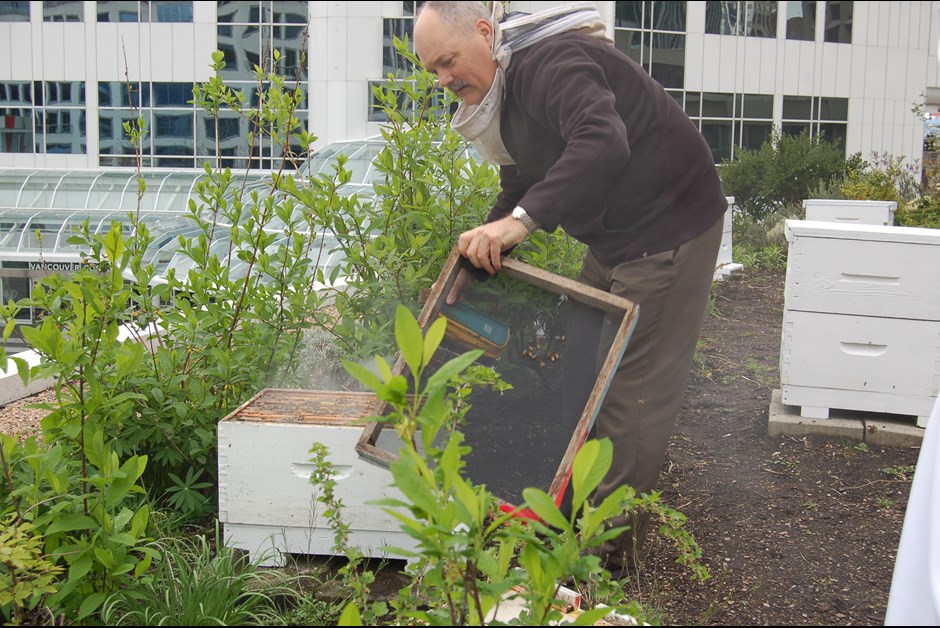Bedtime for Bees ~ The Buzz on Bees with Bee Butler Michael King (September 2014)
Learn more about Fairmont Waterfront or make a booking.
It doesn’t seem possible that after our memorably long hot summer that we should be talking about beginning the process of preparing our bee hive colonies for the winter ahead but the reality is that this is the time of year on the west coast that bee keepers are turning their attention to the work of slowly preparing their bee colonies for overwintering.
By late August and early September the main nectar flows are now over and what is left for collection by bee colonies is a steadily dwindling supply which will not result in any increase in what has already been harvested by the colony and as a result the bees will have started to actually feed on the honey that is in the hive slowly reducing the quantity of honey stored in the frames. You could say that this is the bee equivalent of Thanksgiving as this is the time when they may start feeding on the fruits of their labour that they have created throughout the summer months.
The first thing the bee keeper will do is reduce the number of soupers that form the hive to either 1 or 2 soupers which is done anytime around the middle of August following the last main nectar flow coming mainly from the fireweed plant here on the west coast of Canada and is usually over by the end of the first week in August. The soupers that are removed contain the honey frames which can now be harvested instead of losing the supply to the bees themselves.
As we enter the late summer period the Queens start to naturally reduce the number of eggs that they lay in preparation for the winter ahead as they instinctively know that they must match food supply with colony populations. It is also at this time that the workers will start forcing out the male ‘drone’ bees from the hive as they are not needed at this point and are a drain on the hive food sources as they are not contributing anything of value to the colony. The drones will die outside the hive from either predation or from starvation.
The single or double souper hives will now provide a home to the existing Queen and her remaining workers and any recently emerged new workers, complete with food they have collected from the dwindling number of blooms in their environment. At this time bee keepers may also begin to feed their bees with honey syrup mixes to ensure that they will survive the overwintering process. Commercial beekeepers often feed their colonies with honey syrup exclusively to help them maximize honey production, however hobbyist beekeepers usually provide the bees with frames of honey they have collected during the season for a food source as this is a preferable and more nutritional food source for the bees and helps keep them healthier according to anecdotal evidence.
Our bees on our 3rd floor rooftop will remain with us until around the end of September at which point they will be removed and relocated to their overwintering facility where they will see out the fall and winter seasons in relative safety and comfort.
The surviving colony members will return to us in early May of 2015 to begin the remarkable life cycle process all over again, something that honeybees have been doing as a species for hundreds of thousands of years!
The cycle of life in the natural world is a remarkable phenomenon and one which is increasingly coming under fire from a rapidly changing world. We are proud that we are able to provide an opportunity for one of natures wonders, the honey bee, to live on and thrive in our beautiful city. We look forward to seeing our wonderful winged friends return back to us next spring with a new generation ready to bring life to the world around them. Sleep well!
Learn more about our bees and #BeeButler at: http://bit.ly/greenhotelinitiatives
